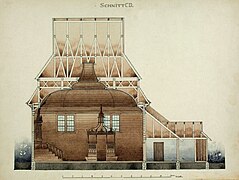Reference




Reference




OpenAI's Answer
The Žiežmariai synagogue in Lithuania is notable for several architectural details that set it apart:
-
Wooden Structure: As a wooden synagogue, it belongs to a unique architectural genre of Renaissance-era wooden synagogues (source).
-
Decorative Ceilings: One remarkable feature is the ceilings with boards laid in decorative herringbone patterns (source).
-
Modesty and Size: The synagogue combines modest decor with monumental size, a reflection of its era's architectural styles (source).
-
Prayer Hall: The lofty southeastern part of the building houses a prayer hall and features 18 windows, many of which were integrated with doors (source).
-
Women’s Balcony: Like many traditional synagogues, it includes a women's balcony. This is an architectural timber structure that has been preserved and recently renovated (source).
-
Historical Importance: Besides its architectural value, the synagogue also holds historical significance, serving as a Holocaust site and a testament to the Jewish heritage in the region (source).
Here are some images of the Žiežmariai synagogue:


These features combine to make the Žiežmariai synagogue a unique and important architectural monument in Lithuania.
Follow Up
Related
What influence did Polish wooden synagogues have on American synagogue architecture?
Can you provide details about the architectural features of the Berezdiwtsi synagogue?
How did the Industrial Revolution impact Birstall's architectural landscape?
What is the architectural significance of the Leonpol synagogue in Belarus?